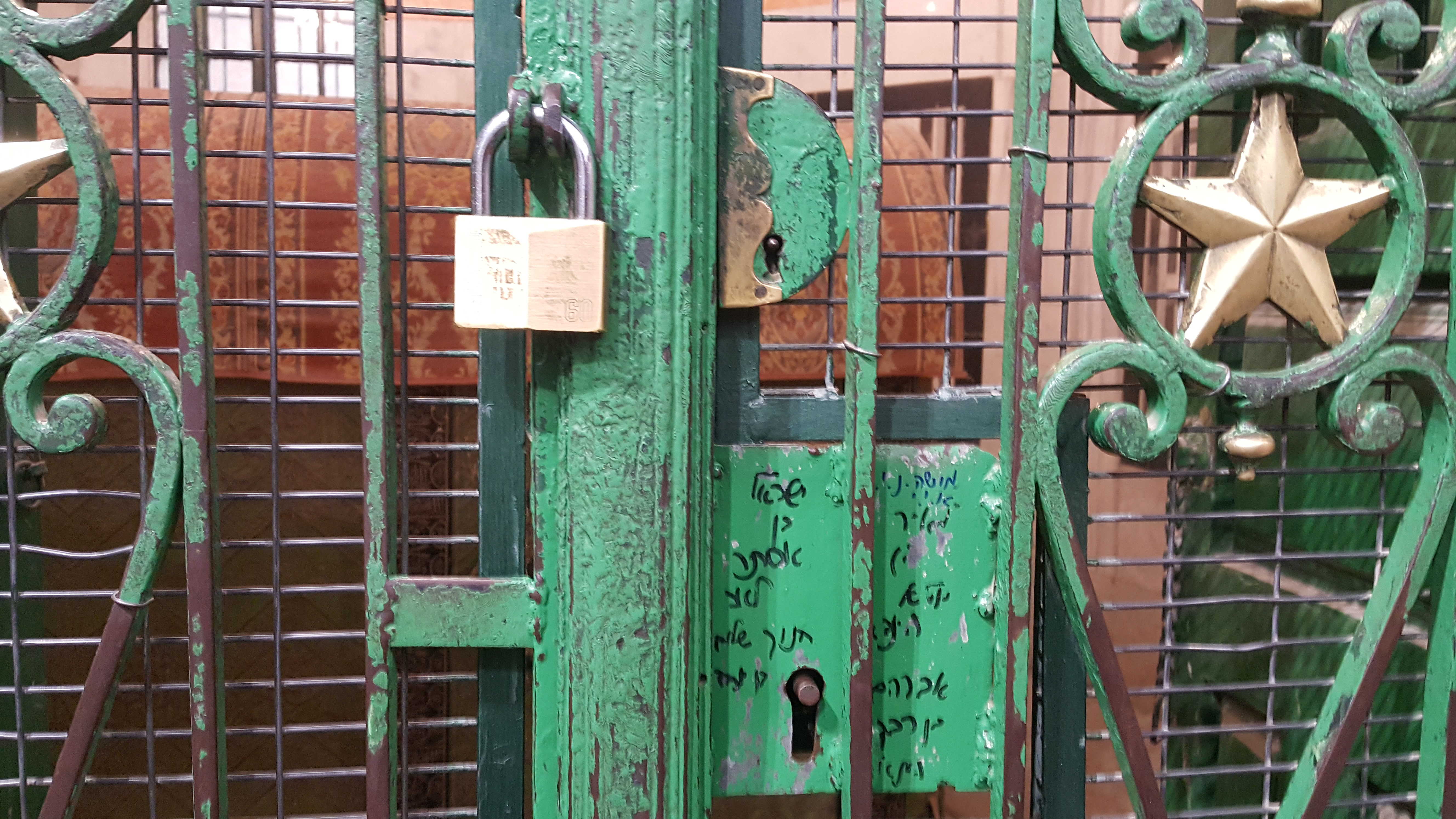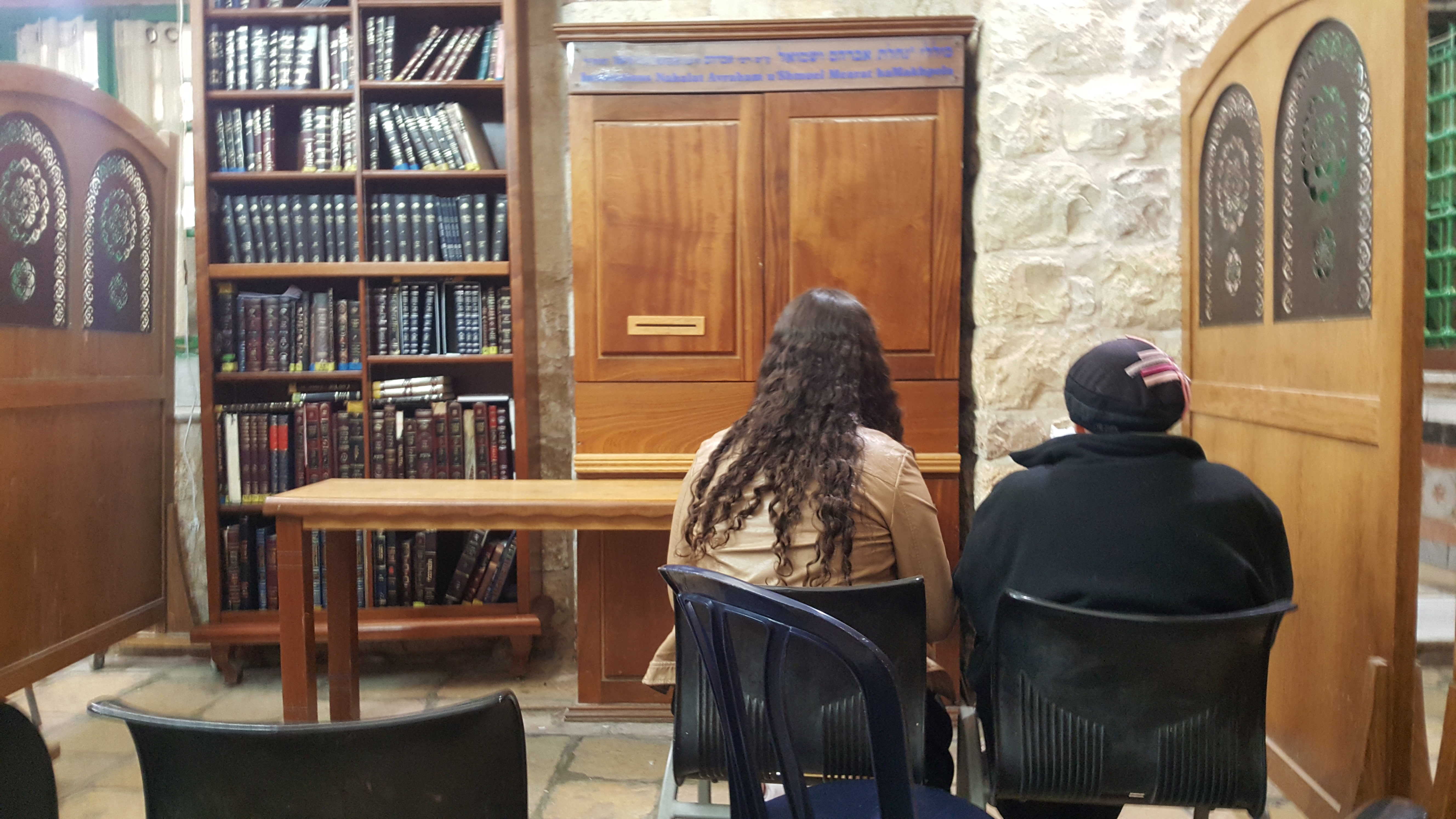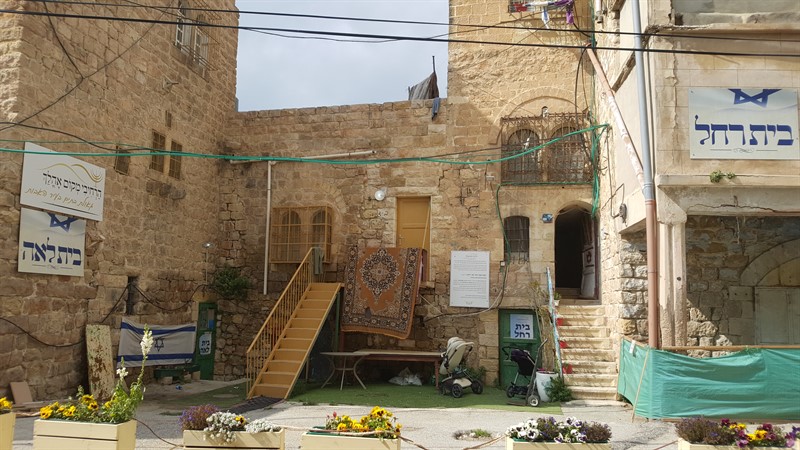








The Cave of Patriarchs located east to Hebron, and south west to Kiryat Arba. The cave is sacred to the three monotheist’s religions. According to the mutual belief, the building suited above the Cave of Patriarchs marks the tombs within the cave. This building splits into two separated parts. One belongs to the Jewish worshipers and the other one belongs to the Muslims worshipers.
The tradition states that in this cave buried the three fathers: Abraham, Issac and Jacob, and three of the mothers: Sara, Rebeca and Lea, as descripted in the Bible.
Over the years more traditions about the graves developed, attributing that this cave also contains the graves of Adam, Eve, Esau and others.
The Arabic name of Hebron, "Al- Khalil", reflects the special status of Abraham in the Islam. He often being refers to as "Khalil Alla", friend of God. In fact, the Muslims believe that Muhammad's purpose was to renew the religion that Abraham founded. While Abraham is the first prophet, Muhammad is the last one, therefor the chain closes.
Along the years, there were many different rulers in the area, fact that had an impact on the holy places. All though the status of the Cave of Patriarchs was similar for the three religions, the different authorities determined which of the three will be free to pray at the cave, while the others were not allow to get inside the building.
The cave of Patriarchs belongs to the Israeli government since 1967. At that time, Muslims and Jews were allowed to pray together. There was a synagogue next to the tomb of Abraham and Jacob, as well as a mosque next to Issac tomb. At some of the special days in the Islamic calendar, the building was closed for Jews.
There were constant conflicts between the Jewish and Muslim prayers through that time, but it was only after 1994 that the Cave was hermetically separated. At the 25 of February, Baruch Goldstien massacred Muslims that were praying in Issac hall. He killed 29 and injured 125 people. Since then, security arrangement changed and no one can access the opposite religion part of the building. The Islamic part contains Issac hall, while Jews pray at Abraham and Jacob halls. Each of the religions has ten special days in a year in which they have access to the whole building and believers from the other religion cannot enter the place.
Although there is a political and religious tension in this site, many prayers around the world visit it on special occasions as well as on a daily basis.
"4000 years ago, Abraham chose to burry Sarah at Ma'arat Hamachpela (Cave of Patriarchs, S.O), and bought it as well as the field next to it, for 400 Shekel Kessef which was a great amount of money at those days. This place is considered as the first Jewish place ever bought in the Land of Israel. The Bible describes in details the purchasing of the cave and field, as well as the burial of Sarah (genesis 23). After Sarah, Abraham was buried in the cave, and later Isaac and Rebeca, Jacob and Lea. This is how the cave became the first "Greatest of the Nation" burial plot of the Jewish people".
From the brochure: "Welcome to the Cave of Patriarchs", written by 'The Jewish Settlement in Hebron', translated by Shahar Oren.
"1. Hebron is the second holiest city for the Jewish people, after Jerusalem. It is mentioned 62 times in the Bible (and not even once in the Koran). according to the Bible, Abraham, the founder of the nation, bought Ma'arat Hamachpela for the full amount of money, and here lived and were buried the Fathers and the Mothers- Abraham and Sarah, Isaac and Rebeca, Jacob and Lea. Jacob was the first to be called at the name "Israel" and he is the origin to the name "state of Israel". In Hebron David established his kingdom and it was the capital city of the Land of Judah for the entire Biblical period. In Hebron stands still the most ancient and preserved, yet functioning, Jewish structure- "The Greatest of the Nation"- the Cave of Patriarchs"
From the brochure: "12 facts about Hebron", written by 'The Jewish Settlement in Hebron', translated by Shahar Oren.
"It's 1815, people keep on coming, men take prayer books and sit at their places. Women take prayer books, and organize more chairs, so there will be room for everybody. Someone asks if there is going to be The Book of Ester reading. A man, dressed with a colorful vest and a Bucharian Kippa is passing by me in the corridor and looks at me suspiciously. To say the truth, I'm really out of place sitting with my notebook in the back, on the stairs close to the tomb of Esau's head, but I don't have a better spot to see what's going on. Sitting in the women section won't allow me to see almost anything. Meanwhile, the men are praying moving their bodies forward and backward, while the women are praying statically. Only two of them are moving during the prayers, the other women are sitting without a movement. One of the women is asked to what did she dressed up as ( I didn't realize she was even dressed up), she answered that she is dressed as " Eshet Cha'il" (Woman of Valor) as she points towards her shoulders. Only then I saw she was wearing officers' strips like a captain".
Shahar Oren's field notes, Purrim Holiday 21.3.19
Shahar: "May I ask; what place did the Cave of Patriarchs had in your decision to return to Hebron?"
Myriam: "Yes. The hotel we lived in was situated in the far edge of Hebron. Every Shabbat my husband and I would go to the cave to pray. The first time we prayed there was at Passover. It is written, God of Abraham, Isaac and Jacob. He told me, do you know what it's like to pray near by the burial place of the Fathers? and they are right there. There is a song, "Od Avinu Hai" (still our father is alive, S.O), it is about Jacob. We sang it at the Jacob hall. do you understand? it was huge for them. After a while we had to move far from Ma'arat Hamachpela, and every Shabbat my husband used to tell the people, walk through as many streets as you can, so they will think we are a lot. We used to walk through the Kasba to the Cave of Patriarchs. It was... a Jewish center. People came from all over the country to see, the burial plot of the Fathers! do you understand? [...] there was always an emotional connection between the Cave of Patriarchs and the Jewish people"
Excerpt from an interview with Myriam Levinger, one of the first Jewish settlers in Hebron after 1967. Interview and translation by Shahar Oren.